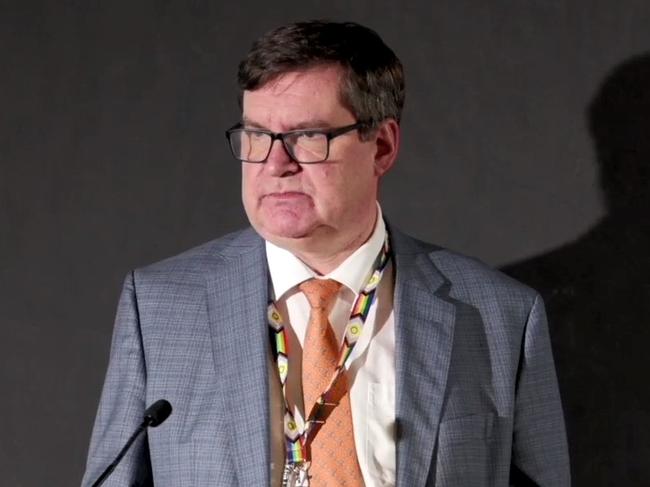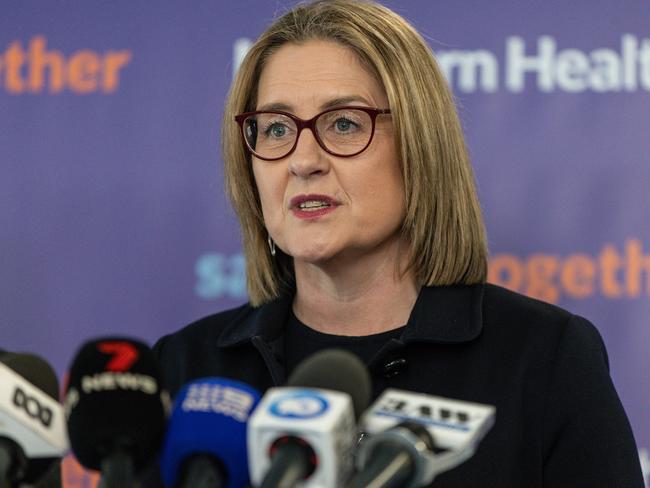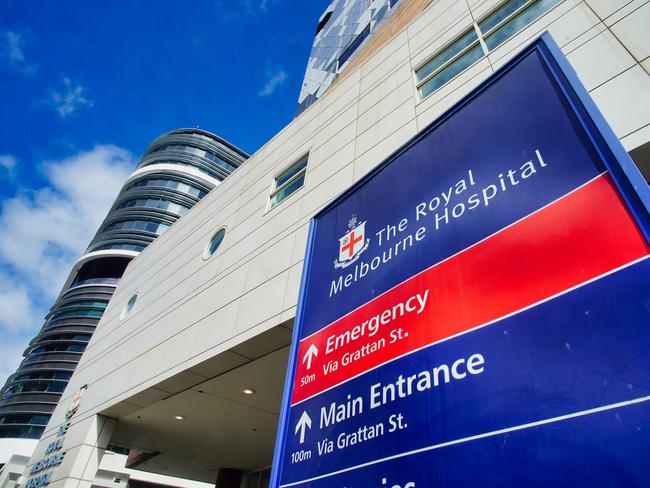Victoria’s health boss reveals new health network structure for hospitals after merger plan denied
Hospitals will share services and run in a “tier” structure with seamless integration, the state’s health boss reveals, but health sources claim the move was merging by stealth after the state government said it would not force amalgamation of health services.
Victoria
Don't miss out on the headlines from Victoria. Followed categories will be added to My News.
Victoria’s health boss has revealed that hospitals will share services and allow the movement of patients more seamlessly as part of a new “tier” structure, after the state government publicly said it would not force the amalgamation of health services.
Health department secretary Euan Wallace appeared before the Public Estimates and Accounts Committee inquiry on Friday where he was quizzed about the state’s new health restructure plan, and the state’s move to deliver a $1.5bn lifeline after months of threatening to strip bare vital budgets.

When asked about the Health Services Plan and possible amalgamations of hospitals, Prof Wallace said all the recommendations of the report had been accepted.
However, when the report was released in November the Victorian government rejected one of the 27 recommendations which related to forced mergers, which have proven unpopular across the health service.
At the time, neither the Premier Jacinta Allan and Health Minister Mary-Anne Thomas could detail what it planned to do now that forced amalgamations were off the table.

Speaking to the panel, Prof Wallace described the new scenario where regional areas would have one or several lead hospitals that would work in a “tier” structure on the basis of “delineation” where patients would be moved to different centres based on the care they need.
He stated the goal was that “care will be delivered as close to home as possible”.
It’s understood patients may be able to move through regional hospitals and services and have health data shared.
He also revealed that how the new structure for Local Health Service Networks (LHSN) would be governed was currently “under development as we speak”.
He confirmed payroll and services like pathology would likely be shared across services in regions.
Opposition Health spokesman Georgia Crozier said it was an admission that hospitals were being forced to merge.
“Today we heard more of the same from Labor’s hand picked bureaucrats who obfuscated and provided more spin on the parlous financial state of Victorian health services,” she said.
“Under Jacinta Allan and Labor its clear amalgamations, cuts and closures are on the way.”
When asked about hospitals funding crisis, Prof Wallace said Covid was a key factor behind the financial pressure being felt across the hospital health system but denied hospitals were in a dire financial position.

He said hospitals were adequately funded despite annual reports from the 2023-24 financial year, revealing more than 30 hospitals had low cash reserves to pay their bills.
This included Goulburn Valley Health, which was operating in the negative for seven days.
Prof Wallace could also not detail where the government’s emergency $1.5 billion treasurer’s advance had been spent and how much was delivered to each hospital.
Instead he said it would be detailed in the consolidated revenue in next year’s annual reports.
Despite the budget woes, Mr Wallace said hospitals were capable of operating under the new budget moving forward and that the health services had done a tremendous job recovering from the pandemic and dealing with ballooning elective surgery lists.
Minister for Health Mary-Anne Thomas said: “Victoria has one of the best health systems in the world and establishing Local Health Service Networks will make it better integrated and connected - this does not include forcibly amalgamating services.
“We are putting patients first, protecting the local services Victorians trust and rely on, and delivering better care to all communities, closer to home.”



